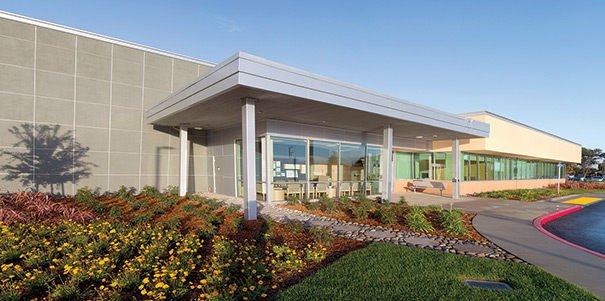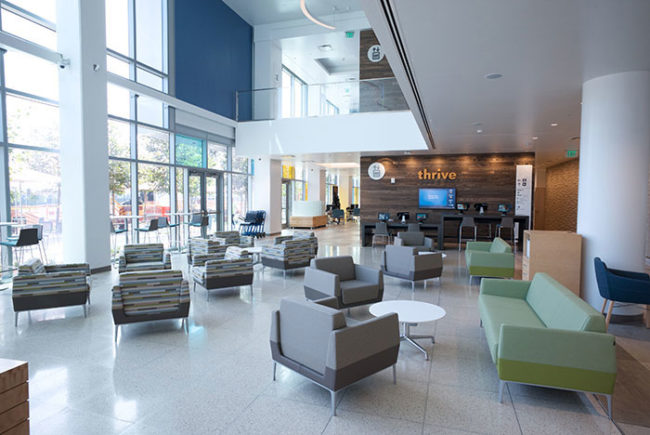
As part of its commitment to offer behavioral health services in clinics that reflect its latest thinking about patient-friendly design, Kaiser Permanente, Oakland, Calif., announced that it will invest more than $115 million to “remodel and refresh” at least 76 of its existing mental health facilities in California.
Kaiser Permanente also plans to invest millions more in building an undetermined number of new mental health facilities as a result of the organization’s growing membership, much of it a result of the Affordable Care Act. California membership grew from 6.9 million in January 2011 to 7.8 million in June 2015.
The goal is to elevate the physical environment at the nearly 80 behavioral health clinics to new design standards called total health environment, developed by the facilities department to ensure a high-quality, positive patient experience, says John Kouletsis, vice president, facilities, planning and design, Kaiser Permanente.
Most behavioral health facilities in the Kaiser system consist of off-site, stand-alone clinics ranging in age from 5 to more than 20 years old and a smaller number located in medical office buildings, Kouletsis says.
Much of the improvement work will involve painting, installing new carpeting and furniture, improving interior and exterior signage, and upgrading lighting in some cases, he says. Some clinics will undergo minor remodeling to improve patient comfort, security and privacy, and a few clinics will relocate, which will require some construction.
“The refresh and remodel includes anything and everything we need to do to our existing clinics to create a transformative patient experience,” Kouletsis says. “We don’t think most of the facilities need to be remodeled because the workflow, the efficiency and safety of the units are already great. It involves mostly changing the look and the feel and not the actual construction.”
The work started this year and is expected to finish by the end of 2016, he says.
Kaiser Permanente also plans to build up to 10 new behavioral health clinics in California within the next 3.5 years, he adds. One clinic that opened earlier this year in San Rafael and another that opened in Daly City in 2013 reflect the design standards shaping the new generation of clinics at Kaiser Permanente.
The project occurs as Kaiser Permanente continues a major push to hire mental health professionals to provide care for its growing membership. The health care system added 497 mental health therapists in California from January 2011 to this past June, which nearly doubled the number on staff in 2011.
Despite a nationwide shortage of therapists, the health care organization plans to hire 354 more mental health professionals by the end of the year, according to Kaiser Permanente.
The goal of creating physical space that meets or exceeds expectations of behavioral health patients and staff carries special importance, says Andrew Bertagnolli, senior manager for behavioral health at Kaiser Permanente’s Care Management Institute.
“Providing high-quality mental health care includes thinking about the space in which that care is delivered,” Bertagnolli says. “As mental health therapists, we might have even a more heightened awareness of how space can influence the clinical encounter not only for our patients, but also for ourselves.”
The need to hire more mental health therapists also contributes to the importance of designing and building aesthetically pleasing clinics, he explains.
“These new spaces are being designed to minimize stressors for patients, provide access to nature, and provide staff areas for respite and to recharge, which are so important to supporting our members’ total health and attracting top-notch mental health care providers,” he says.
New behavioral health clinics will make accessing mental health care services easier and more convenient for Kaiser Permanente members. The statewide expansion is expected to go from 2016 through 2019, with additional capacity expected to continue through 2028.





